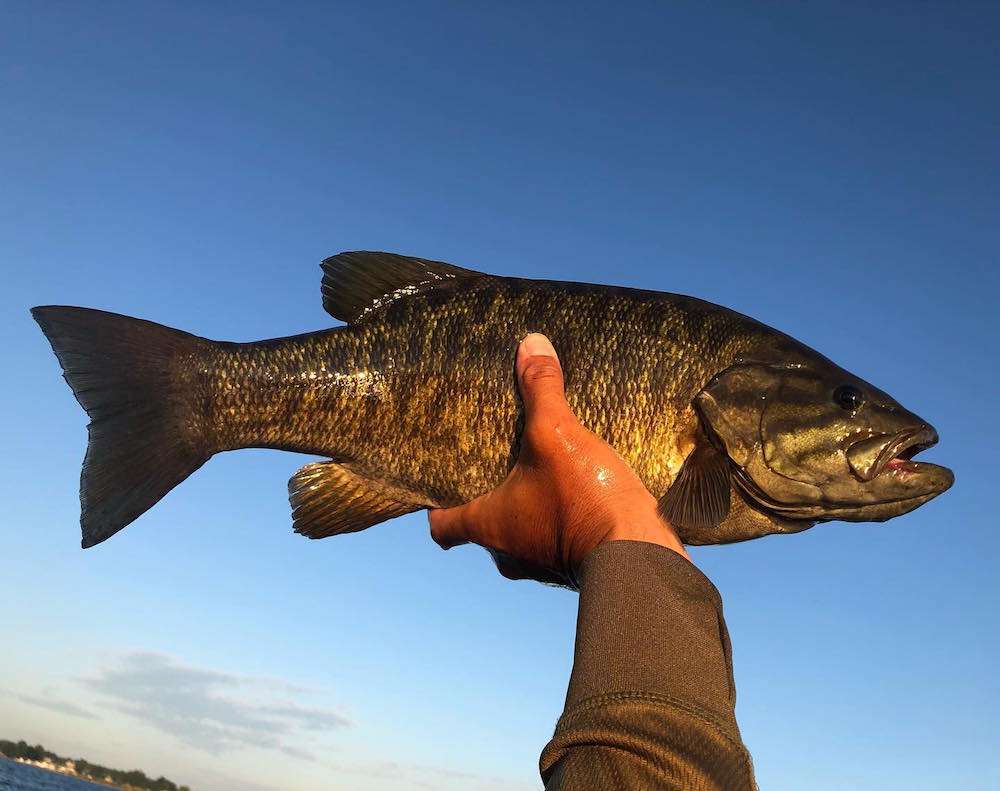
If you’re going to fish for smallmouth up north, and I strongly suggest that you do, you need to pay close attention to details. These bass are big and aggressive, but they’re also old. They didn’t get that way by accident. They got that way by being wary about what they do and how they eat. Details matter.
I’ll tell you how I do it, and then you can make whatever modifications fit your style of fishing.
I never forget that the thing about these smallmouth tournaments is that you can’t get behind. With largemouth you always have the chance that you’ll catch a giant and make up some weight. But with smallies there’s an upper size limit — 5 to 6 pounds — that makes it almost impossible to come from very far behind.
The first thing I want to talk about is getting ready to fish for these beasts. We’ve been fishing big largemouth venues for the most part this year. So when I started repacking for the northern swing, I started from scratch.
There were between 18 and 22 casting rods and reels that needed to be removed from my lockers. I don’t need that big, heavy tackle up there. All it’ll do is take up room in my boat.
I did keep one casting rod, though. It’s the one I like for jerkbaits. Frankly, I don’t think I’ll be fishing with one but you never know. It’s always better to be prepared. Note, however, that I said one rod, not a half dozen. I carry what I might need — no more and no less.
In its place I loaded up spinning tackle. I put maybe eight or 10 rods and reels in the boat. All of them are finesse oriented. That’s fewer than what I carry for largemouth, but I know from experience that I’ll be limited in how I fish and with what.
Obviously, I removed all of my largemouth lures and almost all of my line above 8-pound-test, too. The water’s clear up north and the bigger smallies are wary. I don’t guarantee many things in this business, but I will guarantee that you will not be competitive with 20- and 25-pound-test line. I don’t care how clear it is, or how great it is, or who makes it.
I’ll take a variety of lures — hard and soft — but my primary setup will be a drop-shot rig. It seems like that’s what’ll catch the big ones, the ones that’ll put you in a position to make the Friday night cut and hopefully fish on Saturday. I’m guessing that’s what will win the 2019 Berkley Bassmaster Elite at St. Lawrence River presented by Black Velvet.
An effective drop shot starts with line. I’m a firm believer that big, wary fish in clear water can see line and that if they can see it they won’t bite a bait attached to it. I know that some anglers will disagree. They believe that fish either don’t see line or that they don’t pay any attention to it.
But even if they’re right, and I’m completely wrong, there’s still a good reason for going light. It’s beyond argument that the lighter the line the more natural a small plastic will act and look. That’s why I’ll be fishing all the northern swing events with 6-pound-test on my drop shots whenever I can get away with it, and why I’ll never go above 8-pound-test even if the fish are really big.
If you think that’s too light, I’ll respectfully remind you that it’s plenty strong if you set your drag correctly. You don’t have to horse every fish to the boat. You can play them successfully. Good anglers have been doing that for decades.
In part 2 we’ll talk about some of the other details I pay attention to that I think make a big difference in how many fish you catch.
Editor’s note: Read part 2.





